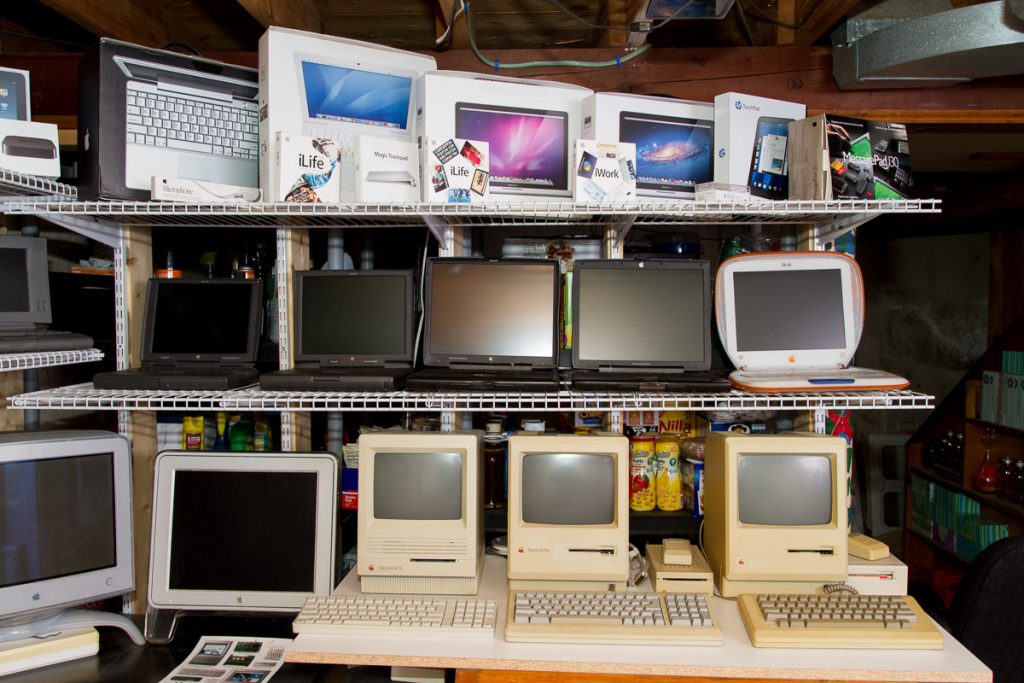The whir of a SCSI hard drive. The distinct smell of warm circuit boards from a 1980s workstation. For most, these are forgotten sensations. For a dedicated few, they are the very essence of a digital archaeology—a passionate, often expensive quest to save computing history from the landfill.
This isn’t just about nostalgia. It’s about preservation. The market for rare and discontinued hardware is a fascinating ecosystem of hunters, historians, and hackers. They’re ensuring that the machines that built our present don’t simply vanish into the ether. Let’s dive into what drives this community and how it operates.
More Than Just Junk: Why These Artifacts Matter
You might look at a beige box from 1995 and see obsolete junk. A collector sees a time capsule. The value here isn’t always monetary—though it can be—it’s historical and functional.
Historical Significance
Some hardware represents a pivotal moment. The first consumer GPU. A prototype game console that never saw mass production. A server that hosted a foundational website. These pieces are the physical evidence of our technological evolution. Without them, we’re left with only stories and low-resolution photos.
Software Preservation and the “Bits vs. Atoms” Problem
Here’s the big issue: you can’t run old software without old hardware. Emulators are amazing, but they aren’t perfect. To truly experience a vintage video game or run legacy business software as it was intended, you often need the original machine. This is the core of hardware preservation: saving the “atoms” to keep the “bits” alive.
The Pure Joy of the Hunt
Let’s be honest—the thrill of the chase is a huge part of it. Scouring eBay listings, stumbling upon a treasure at a flea market, or finally tracking down that one specific SCSI controller card after years of searching. That dopamine hit is real. It connects us to the past in a very tangible, hands-on way.
Where the Hunt Happens: Navigating the Collectors’ Market
So, where does this trading of technological relics actually happen? The market is fragmented, which is part of the challenge—and the fun.
- eBay: The obvious starting point. A vast, global marketplace where you can find almost anything… for a price. Condition and completeness are everything here. A box and manual can triple an item’s value.
- Dedicated Forums and Discords: The real heart of the community. Places like VOGONS (Vintage Computer Forums), 68k Mac Liberation Army, or specific Discord servers are where the true experts gather. Deals are made, knowledge is shared, and “grave digging” stories (the art of rescuing hardware from basements and storage lockers) are legendary.
- Local Marketplaces and Thrift Stores: The holy grail for collectors. Finding an Apple Lisa at a garage sale for $50 is the stuff of dreams, but it does happen. It requires patience and a lot of luck.
- Specialized Conventions: Events like VCF (Vintage Computer Festival) are Mecca for collectors. It’s a place to buy, sell, trade, and geek out with people who don’t think your fascination with 8-inch floppy drives is weird.
The High-Stakes Game: What Makes Hardware “Valuable”?
Value in this world is a funny thing. It’s not always about raw computing power. A $5 microcontroller today can outperform a room-sized supercomputer from the 1970s. So what gives?
| Factor | Why It Matters | Example |
| Rarity | Low production numbers, prototypes, or limited regional releases are instantly more valuable. | Nintendo PlayStation prototype, JVC X’Eye. |
| Cultural Impact | Hardware that defined a generation or launched a major franchise. | Original NES, Apple I. |
| Condition & Completeness | New-in-box (NIB) or complete-in-box (CIB) items command massive premiums. Yellowing plastic (“retrobrite”) hurts value. | A sealed first-generation iPhone vs. a battered, loose one. |
| Functionality | Does it still work? Replacing capacitors and batteries is common, but untouched, working originals are king. | A fully functional Commodore 64 with original power supply. |
The Real Work: Preservation in Practice
Acquiring the hardware is only half the battle. Preservation is an active, ongoing process. It’s a race against time, as components degrade and knowledge fades.
The Capacitor Plague
Many machines from the late 90s and early 2000s are ticking time bombs due to bad capacitors. These components can leak corrosive electrolyte, destroying motherboards. The first step for any new acquisition is often a careful “recap”—replacing every capacitor on the board to ensure decades more of life.
Media Degradation and Digital Transfer
Floppy disks are decaying. Hard drives from that era are failing. A huge part of preservation is transferring software and data from these aging media onto modern, stable storage—and then sharing those “disk images” with the community. It’s a digital rescue mission.
Documentation, Documentation, Documentation
A preserved machine without knowledge is a museum piece you can’t interact with. The community tirelessly documents everything: jumper settings, BIOS passwords, obscure error codes, and repair techniques. Forums and wikis are the collective brain trust keeping this knowledge alive.
The Ethical Dilemmas and Future Challenges
This world isn’t without its conflicts. As prices skyrocket for certain items, it creates tension between pure collectors and preservationists. Is it better for a rare prototype to be sealed in a wealthy collector’s vault or to be opened, studied, and have its firmware dumped for everyone to learn from?
And then there’s the looming question of sustainability. How long can we keep these machines running? Certain custom chips, known as ASICs, will eventually fail with no replacements available. The community is innovating with modern replacements—like FPGA-based recreations of classic chips—but it’s a constant challenge.
In the end, this isn’t just about hoarding old tech. It’s a form of cultural preservation. These machines tell the story of how we got here. They are the canvases upon which the digital revolution was painted. Each rescued computer, each documented schematic, each shared story is a stitch in the vast tapestry of our technological heritage. It’s a reminder that progress is built layer upon layer, and understanding the foundation makes the view from the top that much richer.






More Stories
Hardware Modifications for Retro Gaming Console Preservation
Hardware Solutions for Small-Scale Urban Farming Technology
A Beginner’s Guide to Choosing the Right Processor for Your Needs in 2025